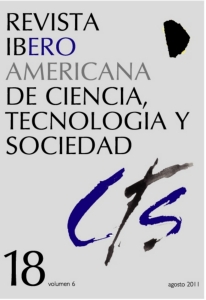The arrival of the computer to the University of Buenos Aires
DOI:
https://doi.org/10.52712/issn.1850-0013-749Keywords:
scientific computing, Argentinean history, ClementinaAbstract
Clementina was the first computer for scientific and academic purposes to arrive in Argentina. It arrived to the country in late 1960s and was installed in the Building 1 of the campus (Ciudad Universitaria) of the University of Buenos Aires. This study analyzes the historical context in which it made its arrival both at national and university levels. It also reviews the experience of its installation, the organization that involved its use, the work done with it and the sad denouement it suffered after the 1966 coup-d’état.
Downloads
References
BABINI, N. (2003): La Argentina y la computadora, Buenos Aires, Editorial Dunken.
BARRENECHEA, A. M. (2003): “La jerarquización de la enseñanza”, en: C. Rotundo y E. Díaz de Guijarro (comp.): La construcción de lo posible. La Universidad de Buenos Aires de 1955 a 1966, Buenos Aires, Libros del Zorzal, pp. 113-122.
CARNOTA, R. y PÉREZ, M. (2009): “Continuidad formal y ruptura real: la segunda vida de Clementina”, en: J. Aguirre y R. Carnota: Historia de la informática en Latinoamérica y el Caribe. Investigaciones y testimonios, Universidad Nacional de Río Cuarto, pp. 125-145.
CHIROLEU, A. (2006): “Las paradojas de la modernización universitaria de los 60”, Estudios Sociales, Revista Universitaria Semestral, Universidad Nacional del Litoral, Nº 30, pp. 97-126
FACTOROVICH, P. y JACOVKIS, P. (2009): “La elección de la primera computadora universitaria en Argentina”, en: J. Aguirre y R. Carnota (comp.): Historia de la informática en Latinoamérica y el Caribe. Investigaciones y testimonios, Universidad Nacional de Río Cuarto, pp. 83-97.
FRONDIZI, A. (1954): Petróleo y política, Buenos Aires, Raigal.
GARCÍA, R. V. (2009): “La construcción de lo posible”, en: C. Rotundo y E. Díaz de Guijarro (comp.): La construcción de lo posible. La Universidad de Buenos Aires de 1955 a 1966, Buenos Aires, Libros del Zorzal, pp. 43-70.
GARCÍA CAMARERO, E. (2007): “Algunos recuerdos sobre los orígenes del cálculo automático en Argentina y sus antecedentes en España e Italia”, Publicação Oficial da Sociedade Brasileira de História da Matemática, Nº 7, pp. 109-130.
HODGES, A. (1992): Alan Turing. The Enigma, Londres, Vintage, Random House.
INFORMATIVO DE INSTITUTO DE CÁLCULO (1961-1963): Nos 1-3-6.
MCBRIEN, D. G. (1956): An Introduction to the Ferranti Mercury Computer.
SADOSKY, M. (1972): “Cinco años del Instituto de Cálculo de la Universidad de Buenos Aires”, reportaje en Ciencia Nueva, Año III, Nº 17, pp. 13-18.
SADOSKY, M. (2003): “Queríamos tener una universidad de excelencia”, en: C. Rotundo y E. Díaz de Guijarro (comp.): La construcción de lo posible. La Universidad de Buenos Aires de 1955 a 1966, Buenos Aires, Libros del Zorzal, pp. 93-112.
SALONIA, A. (2004): Aquel pasado nos estremece y nos zamarrea, Buenos Aires, Fundación Centro de Estudios Presidente Arturo Frondizi.
Downloads
Published
How to Cite
Issue
Section
License
Copyright (c) 2024 CC Attribution 4.0

This work is licensed under a Creative Commons Attribution 4.0 International License.
All CTS's issues and academic articles are under a CC-BY license.
Since 2007, CTS has provided open and free access to all its contents, including the complete archive of its quarterly edition and the different products presented in its electronic platform. This decision is based on the belief that offering free access to published materials helps to build a greater and better exchange of knowledge.
In turn, for the quarterly edition, CTS allows institutional and thematic repositories, as well as personal web pages, to self-archive articles in their post-print or editorial version, immediately after the publication of the final version of each issue and under the condition that a link to the original source will be incorporated into the self-archive.











